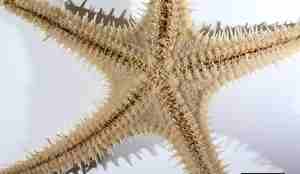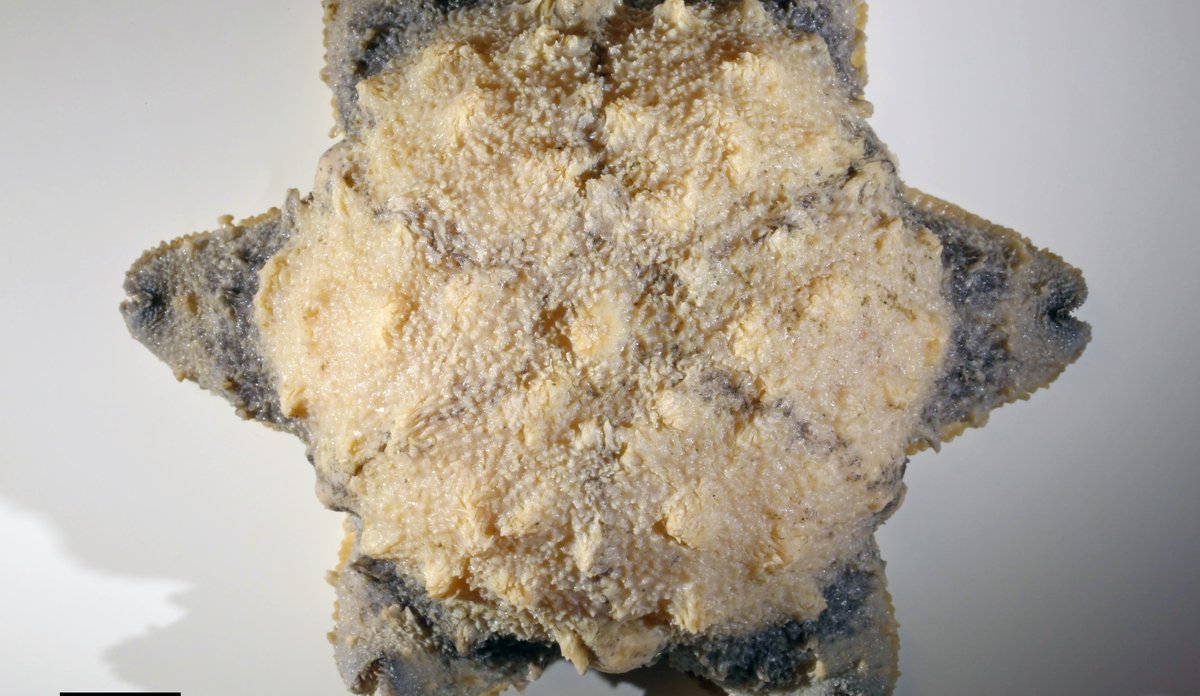Topic: Sea stars – Asteroidea

Pontaster tenuispinus (dorsal)
Photo: Arne Hassel / IMR
Pteraster pulvillus (dorsal).
Photo: Arne Hassel / IMRCrossaster squamatus (ventral)
Photo: Arne Hassel / IMRPublished: 27.07.2020 Updated: 29.07.2020
General appearance
Body as a rule pentagonal, with five arms symmetrically radiating from the central disk. However, there are several exceptions, Crossaster spp. have 8-13 arms. The shape of the arms is also variable, from long and slender in Urasterias lincki, to short and stout in species having an almost pentagonal shape, as in the flat and rigid Ceramaster granularis. Pteraster and Hymenaster spp. are also pentagonal. Poraniomorpha hispida is an example of a strongly convex form.
Crossaster – 8 to 13 arms
Pontaster tenuispinus
Pteraster obscurus
Ctenodiscus crispatus
Star or biscuit?
Anatomy
Sea stars have an internal skeleton with numerous calcareous plates, held together by soft tissues and muscles. Groups of short spines, paxillae, often cover the dorsal side (Pontaster tenuispinus, Ctenodiscus crispatus), and stronger spines are numerous on the adambulacral plates lining the ambulacral groove on the underside of the arms. In Pteraster spp. these spines are united by a web, making a series of combs from the tip of the arm to the mouth.
The mouth, surrounded by jaws with spines, is placed centrally on the ventral side. The stomach has extensions into each arm. If anus is present, it opens on the dorsal side.
Two or four rows of tube feet radiate along the underside of the arms in the ambulacral groove.
Sea stars have a hydraulic water vascular system, with internal water canals connected to the tube feet via muscular sacs, ampullae, to operate them for locomotion. The vascular system also distributes nutrients and waste products and has a major role in the respiration. It has a connection to the outside through the madreporite opening on the dorsal side.
The blood system is reduced. Respiration is accomplished by skin gills, papulae, on the surface of epidermis. Sea stars have a nervous system, but no brain. Light sensitive eye spots may occur at the tip of the arms.
Many sea stars have pedicellariae, small surface appendages with movable jaws (valves), for protection against attack, and for cleaning the skin. In crossed pedicellariae the two valves cross each other like the jaws in a wrench, another type is called straight pedicellariae. Both are numerous in the Arctic sea star Urasterias lincki.
Diet
Most sea stars are carnivorous and feed on bivalves, gastropods and other echinoderms. Examples are Asterias rubens and Crossaster papposus. If the prey is large, they may protrude the stomach to start digestion externally. Other species are detritus feeders, utilizing mud as the food source (Ctenodiscus crispatus).
Development
Larval development is usually planktonic. The planktonic larvae are bilaterally symmetrical. Pteraster and Hymenaster spp. have internal development in a brooding chamber under the supradorsal membrane.




















